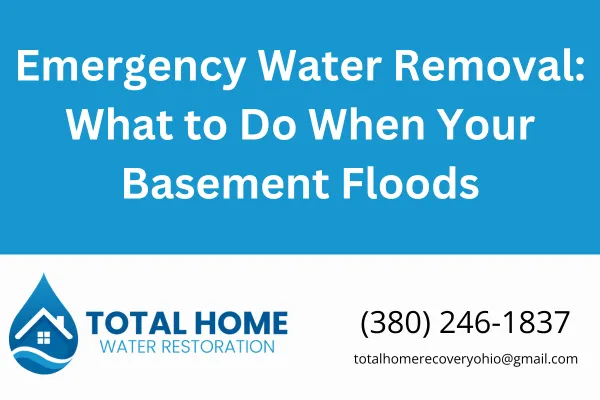
Emergency Water Removal: What to Do When Your Basement Floods
Emergency Water Removal: What to Do When Your Basement Floods
If you're reading this with soaked socks and a shop vac in hand—you're not alone. Basement floods happen fast and hit hard, especially here in Grove City and around Columbus. Whether it’s a broken pipe, sump pump failure, or a flash storm, the key is acting quickly. Here's what you need to know.
First: Stay Safe
Flooded basements are dangerous. Before you do anything else:
Shut off power to the affected area. If you can’t safely reach the breaker, call an electrician.
Avoid standing water if electrical systems could be compromised.
Check for gas leaks or strange odors. If something smells off, get out and call 911.
Your safety comes first. Always.
Second: Stop the Source
If the flooding is still happening:
Shut off your home’s main water valve if the source is a pipe.
If it’s a sump pump failure, see if a reset or backup system works.
In heavy rain, there may be no stopping it until the weather clears—but get ahead of the cleanup.
Third: Call a Pro for Emergency Water Removal
Water damage doesn’t wait. Within 24-48 hours, you’re at serious risk for:
Mold growth
Structural damage
Ruined drywall and insulation
Electrical hazards
At Total Home Water Restoration, we offer 24/7 emergency water removal. Our team arrives fast with industrial-grade extraction, drying, and dehumidifying equipment. We get the water out—and stop the damage from spreading.
Fourth: Start Documenting for Insurance
If it’s safe to do so:
Take photos and videos of everything—walls, floors, belongings.
Save any receipts for emergency repairs or equipment.
Call your insurance agent right away. The sooner you file, the better.
We work directly with most insurance companies and can help guide you through the process.
Fifth: Dry It Out—Fast
Even after the water’s gone, moisture lingers. You need a thorough dry-out to prevent mold and rot. That means:
Pulling up carpet and pads
Removing wet drywall and insulation (usually 2 feet up)
Using air movers and dehumidifiers continuously
We follow IICRC S500 standards for professional water damage restoration—this isn’t just drying, it’s protecting your home long-term.
Finally: Repair and Rebuild
Once it’s clean and dry, we can restore your space better than before. Our licensed crews handle:
Drywall repair and painting
Flooring replacement
Plumbing fixes
Full basement remodeling if needed
Our motto is “From disaster to done right.” We fix it like it’s our own home.
FAQ: Emergency Water Removal
How soon should I call after a flood?
Immediately. The faster we get on site, the more damage we can prevent.
Do I have to tear out drywall?
If water wicked into the walls, yes. Mold can grow behind it if not removed. We’ll only tear out what’s necessary.
Is emergency water removal covered by insurance?
Often yes, if the cause is sudden and accidental (like a burst pipe). We’ll help you understand your policy and file the right claim.
Need Help Now?
Call Total Home Water Restoration at 380-246-1837 for 24/7 emergency water removal in Grove City, Columbus, Hilliard, Westerville, and surrounding areas.
📍 4141 Hoover Rd, Grove City, OH 43123
